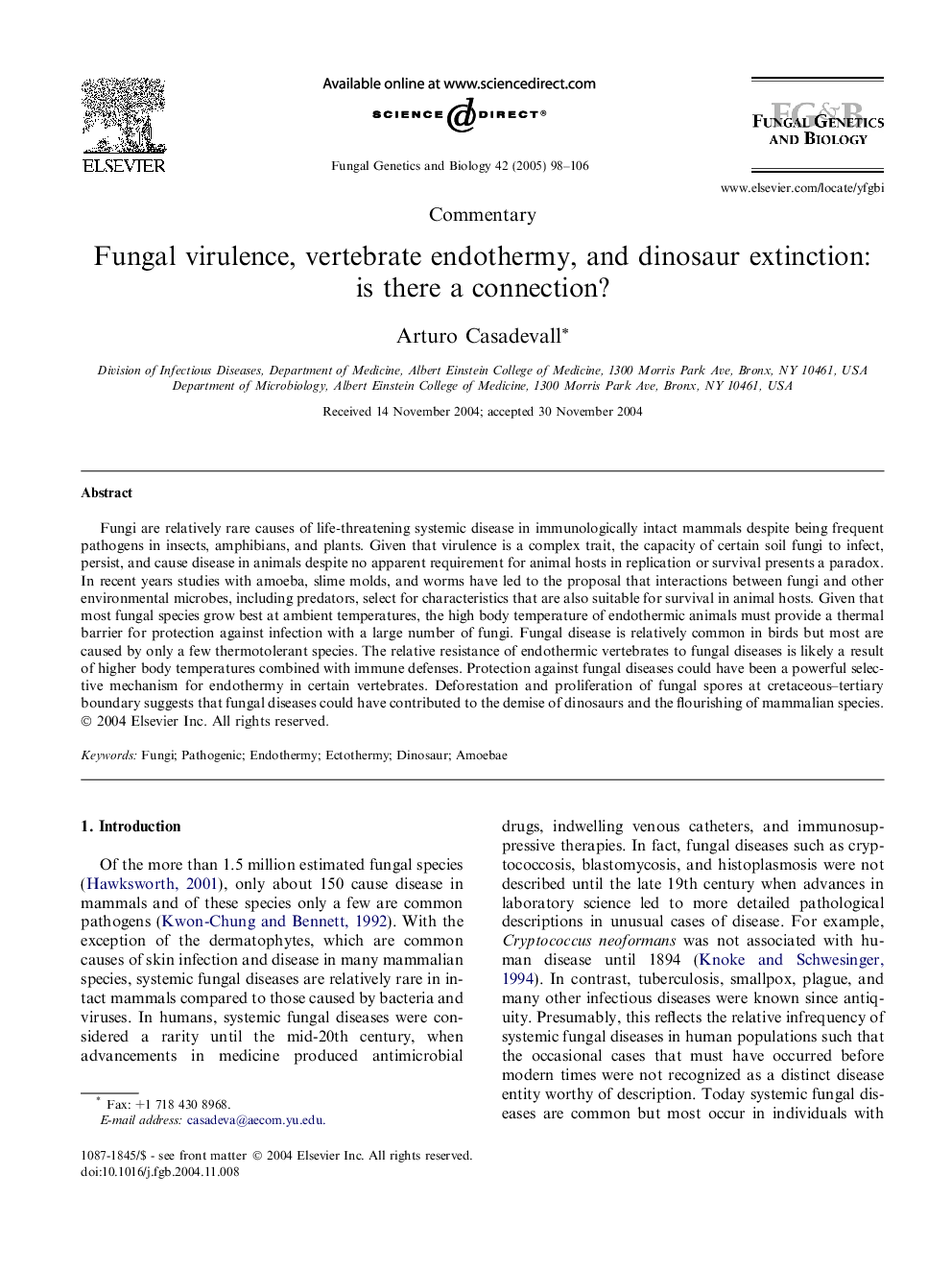| Article ID | Journal | Published Year | Pages | File Type |
|---|---|---|---|---|
| 10939716 | Fungal Genetics and Biology | 2005 | 9 Pages |
Abstract
Fungi are relatively rare causes of life-threatening systemic disease in immunologically intact mammals despite being frequent pathogens in insects, amphibians, and plants. Given that virulence is a complex trait, the capacity of certain soil fungi to infect, persist, and cause disease in animals despite no apparent requirement for animal hosts in replication or survival presents a paradox. In recent years studies with amoeba, slime molds, and worms have led to the proposal that interactions between fungi and other environmental microbes, including predators, select for characteristics that are also suitable for survival in animal hosts. Given that most fungal species grow best at ambient temperatures, the high body temperature of endothermic animals must provide a thermal barrier for protection against infection with a large number of fungi. Fungal disease is relatively common in birds but most are caused by only a few thermotolerant species. The relative resistance of endothermic vertebrates to fungal diseases is likely a result of higher body temperatures combined with immune defenses. Protection against fungal diseases could have been a powerful selective mechanism for endothermy in certain vertebrates. Deforestation and proliferation of fungal spores at cretaceous-tertiary boundary suggests that fungal diseases could have contributed to the demise of dinosaurs and the flourishing of mammalian species.
Related Topics
Life Sciences
Biochemistry, Genetics and Molecular Biology
Cell Biology
Authors
Arturo Casadevall,
